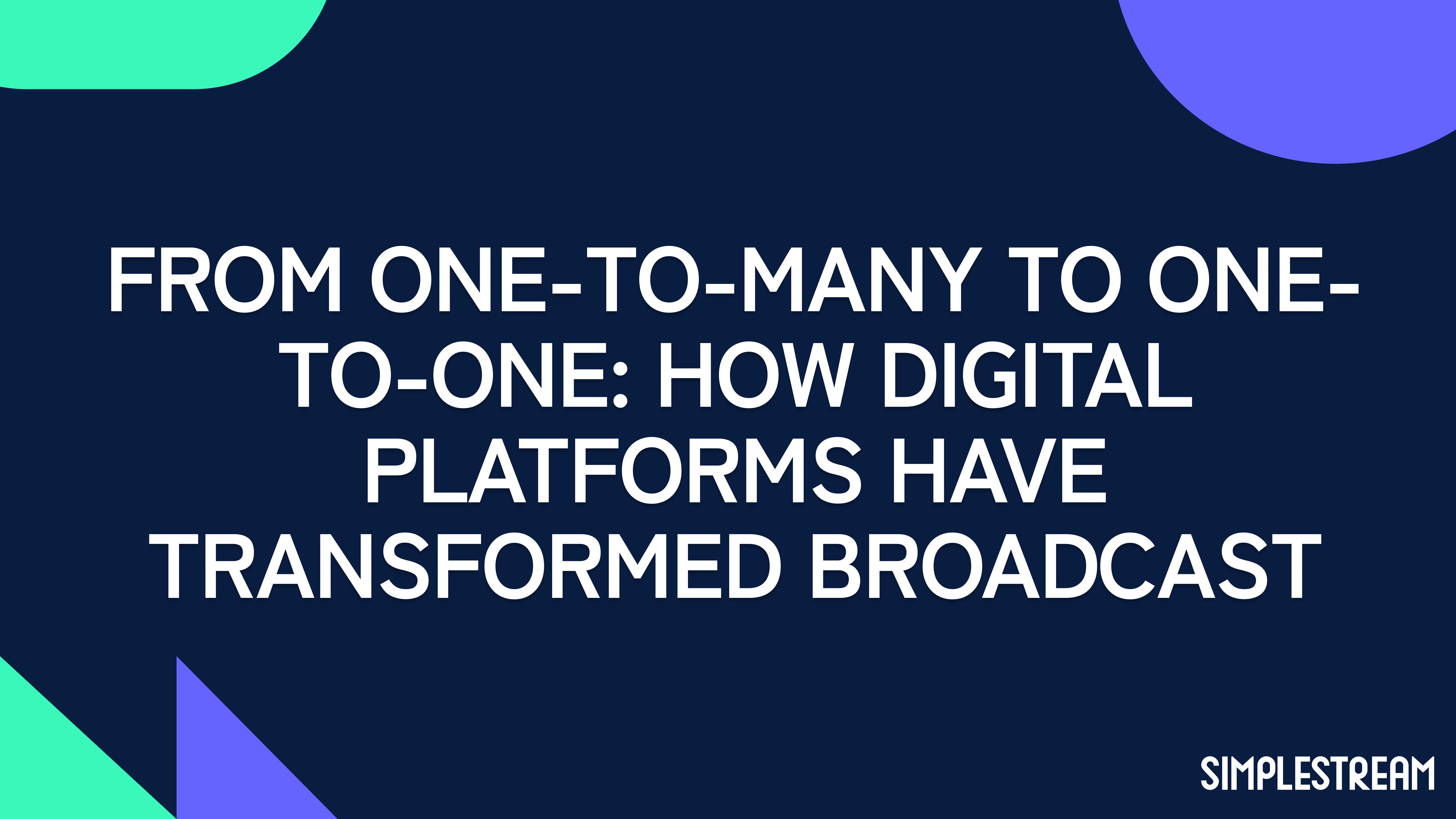Digital transformation for broadcasters: OTT services
What every Broadcaster needs to know about OTT services and digital transformation for audience retention, revenue growth, and operational efficiency

Nothing is certain but death, taxes, and television.
Television (TV) may not have originally featured in that famous quote by Benjamin Franklin, but it probably would have if TV was around in his day. It’s hard to imagine home entertainment without it.
The way we watch TV is changing, but maybe not as much as some in the OTT industry would have you believe. In truth, the last time there was a truly monumental change to the way TV is delivered and consumed, was in 2012. That could prove a big problem very soon.
2012 was the year that the UK completed the switch from an analogue to a digital TV signal. Broadcasters accepted it as a natural evolution to a richer experience for viewers, which provided more channels and an electronic programme guide (EPG). This, in a nutshell, is what digital transformation is all about.
OTT streaming services are to digital TV what digital was to analogue, the natural next step forward. Not just something to sit alongside the broadcast TV experience as an alternative.
Broadcasters that don’t adopt emerging technology and deliver the best experience for viewers could face extinction. Viewers are always looking for the path of least resistance to the ideal viewing experience.
Digital transformation for Broadcast TV
Digital transformation, in the context of broadcast television, relates to how emerging technology and channels can enhance processes and output using computing and the internet.
The broadcasting industry has seen several paths of digital transformation in the past 100 years, from the first digital TV signal to the dawn of the Internet. Digital transformation as a concept is not limited to a single event, it’s an ongoing process as new technology emerges.
When the World Wide Web was first introduced to the public in 1993, many television broadcasters may not have seen the value in creating a website. It was an emerging technology after all, and not directly related to delivering their programming. Flash forward to today, and every broadcaster has a website.
The ones that don’t? Well, they’re probably no longer broadcasting.
Audience retention in the streaming age
.png)
Streaming was a huge turning point in digital transformation, as consumers could finally access content on demand, and without the restrictions of a linear viewing schedule. The result? Streaming accounts for nearly 40% of US TV consumption. It’s a similar story in the UK, with Ofcom reporting a drop of 12% in the time people spent watching broadcast TV.
As much as it’s reported that streaming is overtaking broadcast TV for viewership, consumers still enjoy the content broadcasters have to offer. This is especially true of Public Service Broadcasters in the UK.
The BBC aired 9 out of 10 of the most popular shows on Christmas Day in 2023, with BBC One alone boasting viewing figures greater than the entire SVOD market in the UK that day. Across all BBC TV channels, it was around 39.3 million viewers.
It’s not the whole story though, as the BBC could have missed out on millions of views if not for their streaming service, BBC iPlayer. The service recorded 177 million programmes streamed during the period 25 to 31 December 2023.
Revenue growth in Broadcast TV
Adopting new technology is costly, especially in the broadcast industry. It’s not as simple as deciding to switch existing hardware with cloud-based solutions. The concern is growing revenue and seeing a return on investment in new technology while maintaining the standards consumers have come to expect.
Digital transformation of broadcast TV using OTT services offers a proven path to grow revenue while retaining audience and increasing operational efficiency. Consumers are already using streaming services and now expect broadcasters to offer them too.
Streaming services also provide the opportunity for broadcasters to attract advertising clients, as they can provide more accurate data about who is watching.
Your next TV will be online-only
%20(1).png)
Technology has made the consumer more impatient. It makes sense, as technology increases operational efficiency at the business level, and it’s then passed on to the consumer.
This is what happened when broadcasters switched to digital TV signals, it made the analogue experience unthinkable, in comparison, for consumers.
Public service broadcasters like Channel 4 are taking note and have announced plans to become a digital-first streamer by 2030 to protect its long-term sustainability. Broadcasters need to adopt this strategy to remain relevant for generations to come.
It’s not (just) the content, it’s the experience
When the analogue TV signal was switched off in 2012, most people didn’t even notice. That’s because digital TV provided them with more channels to watch, increased functionality, and reliability.
The TV experience today is a mess. We have digital TV, catchup, apps, and connected devices – it’s an incredibly fragmented experience for the consumer. This is before we even mention the sheer amount of content available.
Sometimes the viewer wants content on demand, and sometimes they just don’t want to have to choose. This is why, even in OTT, there’s live and on demand content available.
The answer?
Broadcasters could offer a hybrid of the TV experience delivered over the internet, through an OTT service. Offer channels alongside content on demand, and it makes for the best of both worlds for the consumer.
Broadcasters need to be digital-first
%20(1).png)
As mentioned, Channel 4 recognise the opportunity that being digital-first offers and has set its target for this by 2030. It’s not just one public service broadcaster that’s taking these steps, the BBC are on a similar path.
OTT services capture younger demographics, that’s clear. Capturing these viewers ensures the next generation sees value in the service and content that broadcasters offer.
Kerena Saminidis, General Manager of BBC iPlayer recognises this too, making it clear that “BBC iPlayer was and has been seen as a catch-up service It’s really important that we position as a destination service instead.”.
It’s data that’s driving these decisions too, as the latest BBC hit show Traitors recorded over 60% of its viewing through the BBC iPlayer service.
It’s clear that the future of TV is in OTT, and that broadcasters are taking steps to future-proof their programming by taking this route. For broadcasters today, having an OTT service isn’t the nice addition it once was, it’s now the destination.


